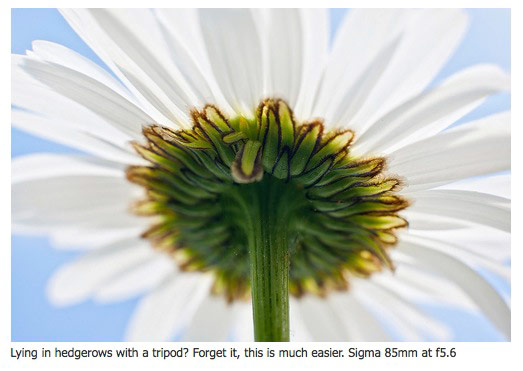Using the Sigma 85mm for Macro
Using the Sigma 85mm f1.4 for Macro
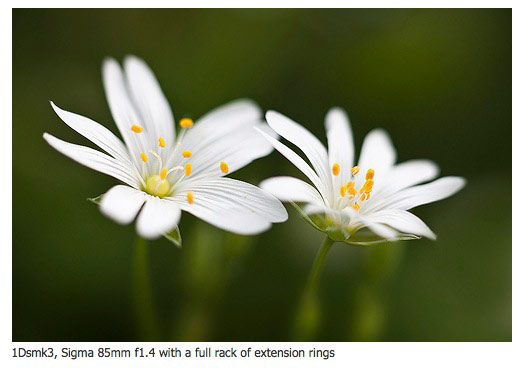
Plan of Attack
I have to say there is nothing more irritating than setting up a tripod to shoot intimate macro. The slightest movement can mean another five minutes of tripod nudging and realigning, whilst cursing the wind with aching knees. I want freedom from these restrictions, both physical and mental. I need quick responsive AF, sharp focus and quality results, all with smooth backgrounds and graduated colours. Is this too much to ask? Well it is quite a lot, enough for me to look at the Canon 100mm 2.8 IS, but is f2.8 really wide enough? I think f1.4 or f2 sounds much more exciting.
So let me jump to the end of the review and start by saying, ‘Thank you Sigma for lending me the 85mm f1.4 for review. It has yet again changed the way I work.’ I haven’t taken a single portrait with it, just flowers and more flowers, and the results have been amazing to say the least. I am untethered at last and my creativity is flowing like never before.
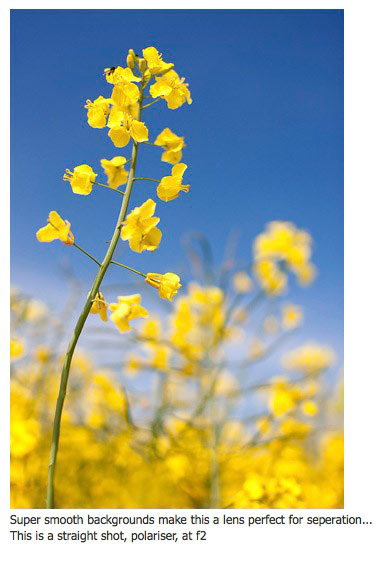
The Weapon of Choice
The first thing you notice when you pick up the 85mm is just how solid and heavy it is. I recently bought a Sigma 50mm f1.4 (that I am extremely happy with in the end) for narrow depth of field work, so it’s no surprise that the build quality is the same impeccable standard. The 77mm glass is incredibly bright and I have to say looks amazing both on and through my 1Dsmk3. A quick ‘field over the road’ sharpness test revealed surprising detail with hardly any vignetting at f1.4, with incredible sharpness between f2.8-f11. Yet this ‘geekery’ was rather unimportant for my initial subject matter – tiny hedgerow flowers. Who buys a fast prime to shoot landscapes anyway? I want wonderful soft bokeh and smooth out of focus backgrounds, just like the Sigma 50mm f1.4 that I am learning to use when I travel.
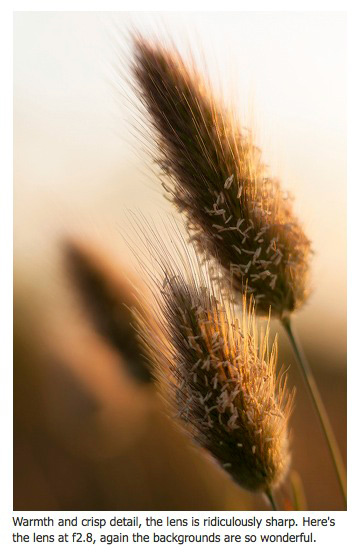
The Ninja Technique
After a few minutes sitting roadside in a sunny South Devon lane, I was reaching for the Kenko rings. The minimum focusing distance was nowhere near close enough for these tiny flowers, so I began to ‘add some distance’. The rings push the lens physically further away from the camera body and this decreases the minimum focusing distance. Naturally there is a compromise; the lenses loses infinity focus, but who cares, I am sitting in the road.
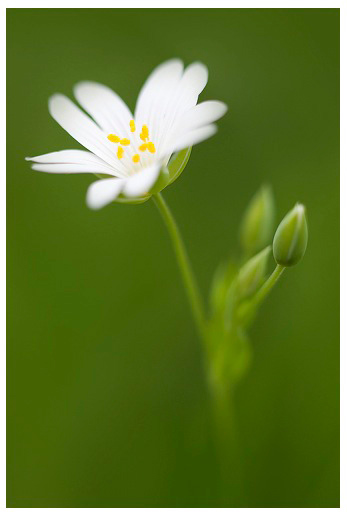
Choosing the 36mm ring was almost perfect for the subject, filling the frame with delicate Stitchworts. After adding even more rings, (25mm and the 12mm), close focusing became utterly incredible. The Sigma’s entire focusing range was just reduced to just a few centimetres. Now to change some settings to make shooting easier –
AI SERVO, ISO400 and change the shutter mode to Continuous Shot
Firstly position your body in a comfortable position.
Now look through the viewfinder and rock forwards and backwards until a rough focusing distance is achieved.
Set the aperture to f2
Twist your body looking carefully and examine the plane of focus. In this case I was paying particular attention to the stamens and the bud.
Now half depress the shutter and gain focus lock. Expect the lens to shudder a little as it tracks any subject movement and compensates for minute changes in your body position.
Check the metering
Take a deep breath and hold it.
Blast three or more shots.
Exhale and check for change in facial colour.
To be honest I have to say I was astonished at the results. Hedgerow flowers this small are extremely hard to separate out from their surroundings with conventional macro lenses. This is where the Sigma’s super wide apertures make a massive impact. With extension rings the effect is even better. There on the viewfinder were perfect flowers emerging from silky smooth greens. It would have taken a long and frustrating time to get this quality result with any conventional macro lens, routed to the spot. The more I shot, the better my technique became and in just one afternoon, the pictures just got better and better.
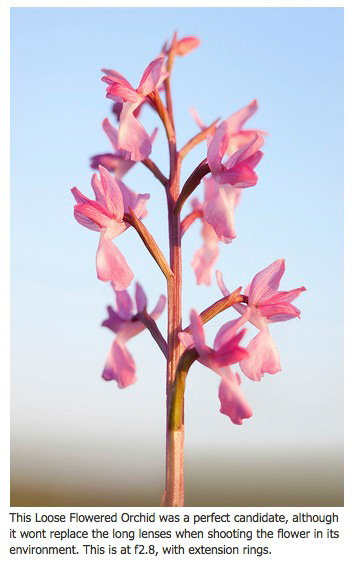
The Gunslinger
Ok, many people love the Canon 100mm f2.8, adore the 180mm f3.5L and the feel smug about the Sigma 150mm in particular, but consider this – the Sigma 85mm f1.4 outguns these sluggish optics with comparative ease. The AF on this lens is so fast and accurate, even with extension rings, that it outstrips all these the lenses handheld. Would you also be surprised to find out that it almost laughs in the face of the Canon’s 85mm f1.2 mkII? There is a marked difference in the AF speed between these lenses, with the Sigma outperforming the Canon in tests. Couple that with the price tag, an astounding £1000 cheaper and it’s time to ask yourself if brand loyalty is all that necessary?
The Unsung Hero
With Sigma’s questionable copy-to-copy variation staining their reputation, many quality photographers still feel rather sore about Sigma, a bit like the whole Skoda / Volkswagen stigma. Sadly its still an issue, because despite their strong industry position as I found myself doubting their QC. I went through 4 x Sigma 50mm f1.4’s to get the perfect lens. Ok, I know that’s what Canon’s micro adjustment is for, but no matter what I seemed to do, the lens was not auto focusing accurately enough for my liking. The fourth lens is utterly superb.
On the other hand, The 85mm f1.4 was utterly impeccable straight out of the box. You’ve got to ask yourself,’ Do I feel lucky?’ I do feel lucky. I personally feel like it is the most powerful handgun in the world right now. Further testing shows it’s simply a wonderful, wonderful lens with exceptional optical strengths, super accurate AF and pro build quality. I am going to be very excited to use it for Northern Lights workshops this coming October too as I know I can trust it to deliver the goods, literally wide open.
It’s a jack of all trades. In the right hands, with the right approach, the Sigma 85mm f1.4 is one of the most exciting and versatile lens I have ever used. Although my approach is not the most straightforward, I can’t recommend it enough.
